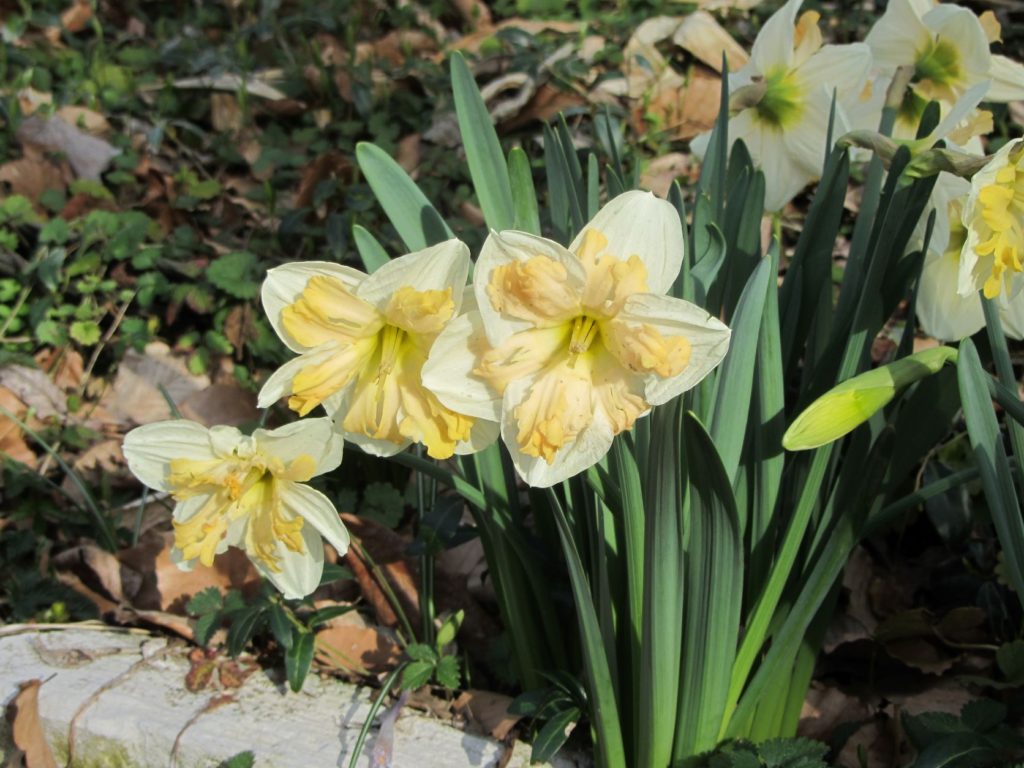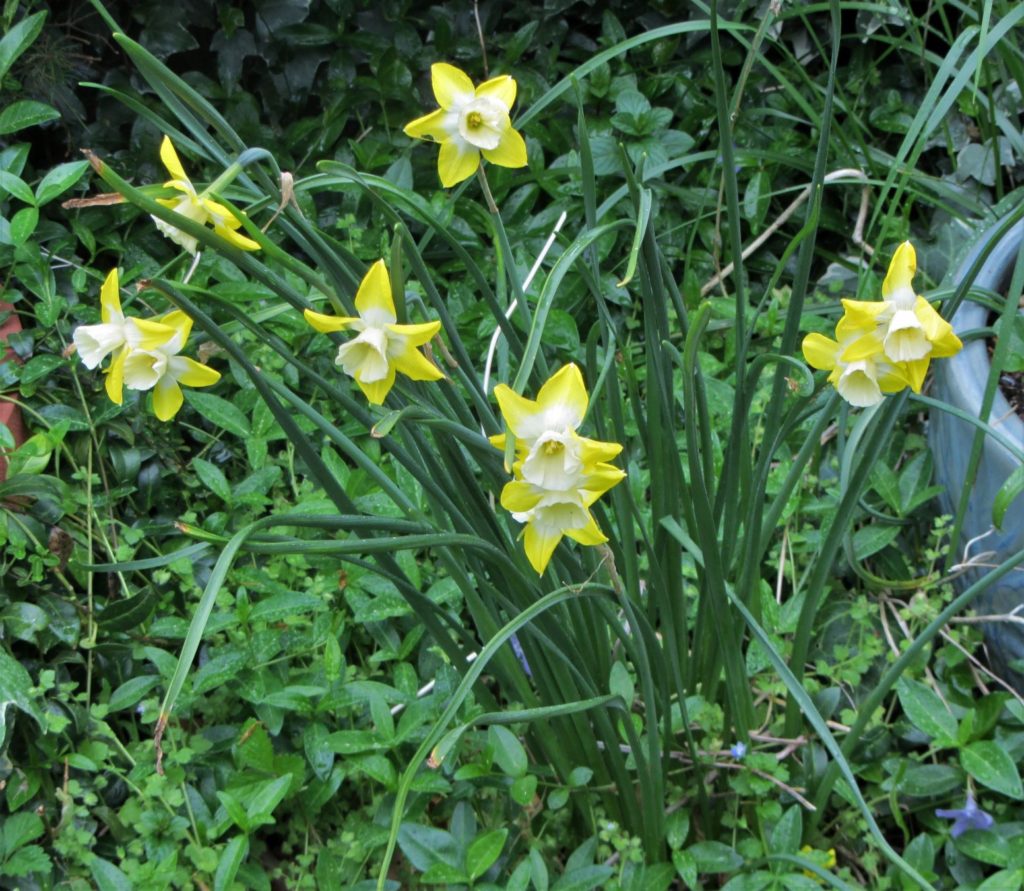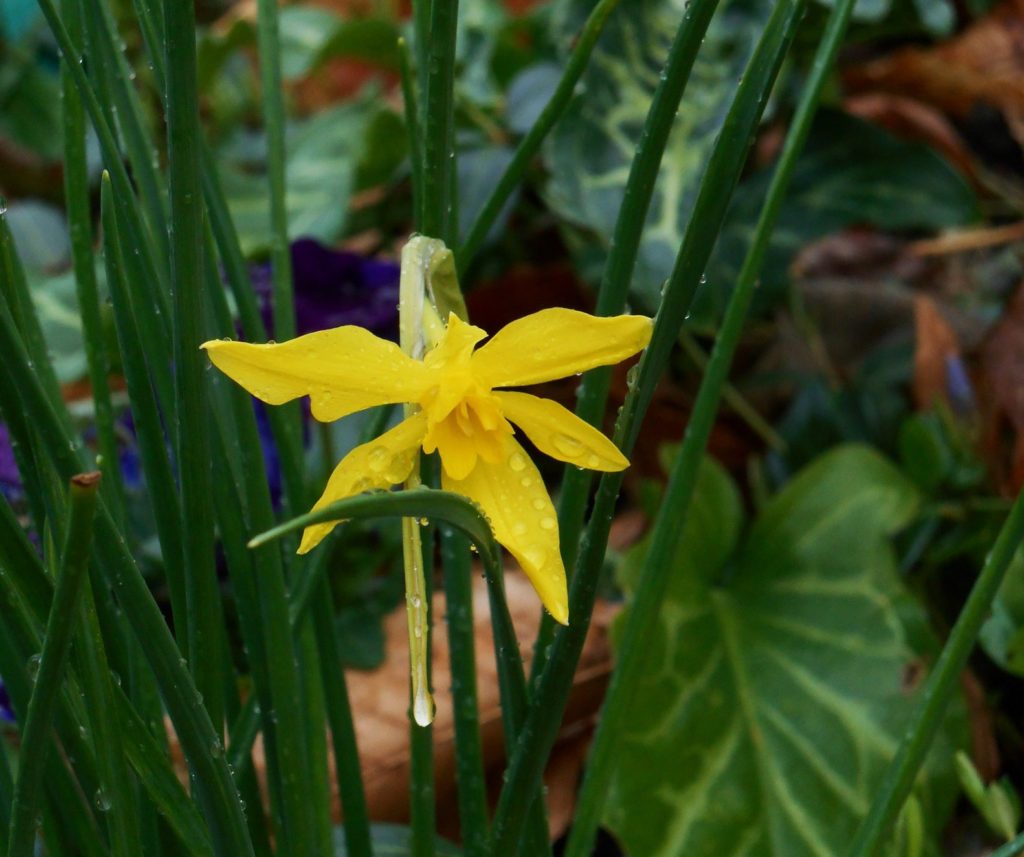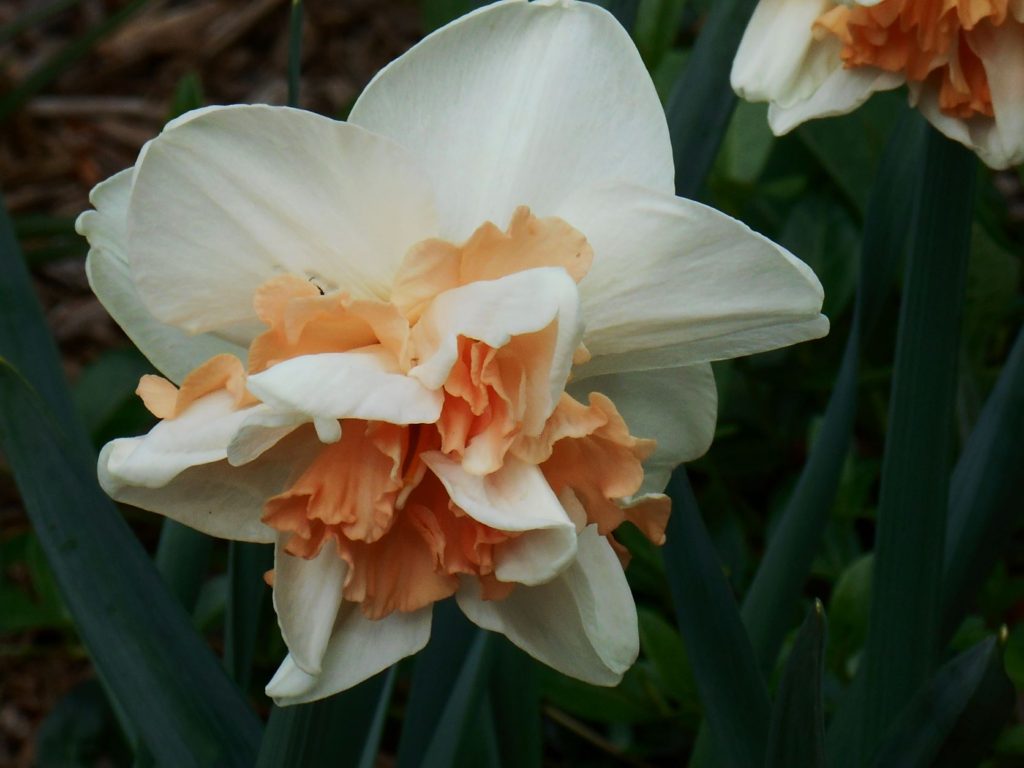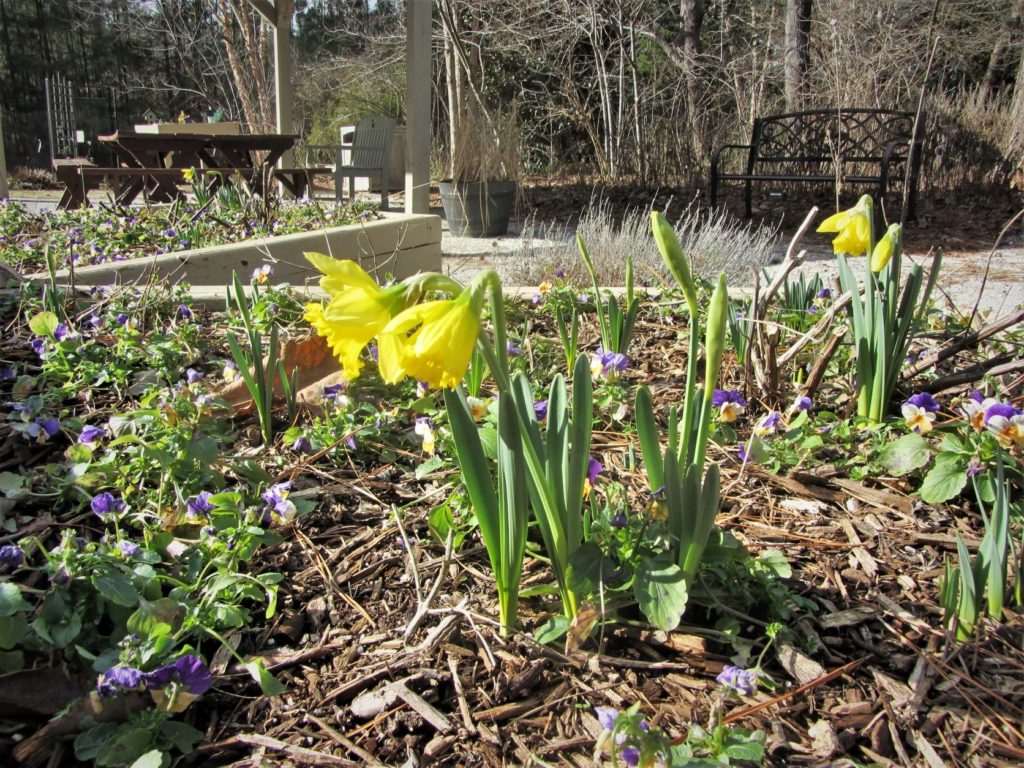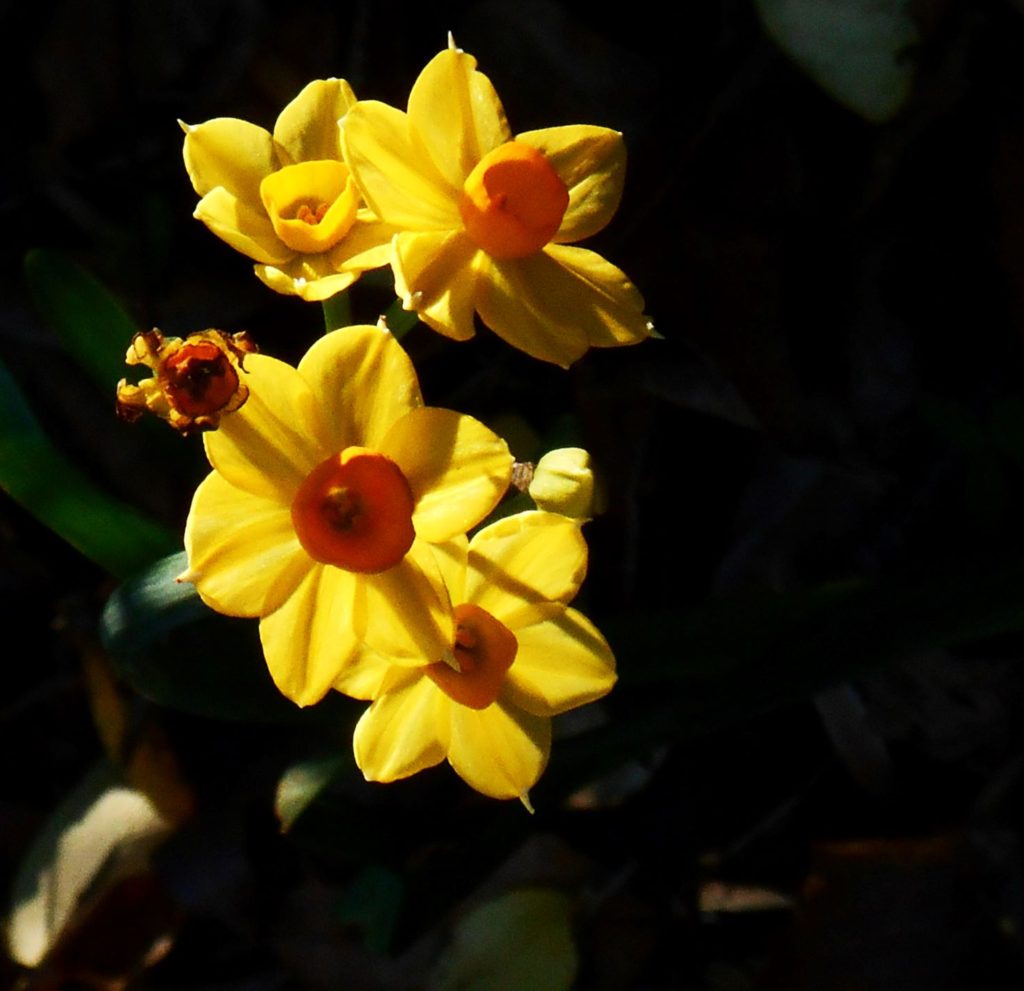For Love of Narcissus
Is it possible to fall in love with a genus of plant? Absolutely. Some flowers appeal to us so persistently that we respond to them in ways that don’t quite make sense. Their pull on our imagination, our affections, and yes, our resources, defies reason.
Across horticultural history you’ll find characters who left their home continents behind to collect favorite plants. You’ll find those who quit their day jobs to breed and grow them full-time. And you will find smitten gardeners who collect them, year after beautiful year.
My neighbor called to tell me that his first daffodils began blooming on January 5 this year. He and I both collect daffodils and thousands of them bloom each spring between our two adjoining yards. I had already photographed the first daffodils blooming at the Williamsburg Botanical Garden last week, and we both agreed how cheering it is to enjoy their bright yellow flowers in early January.
Noel Kingsbury, a beloved British landscape designer and horticulturalist, takes us on a journey of all things daffodil in his beautiful and very useful book, Daffodil: The Remarkable Story of the World’s Most Popular Spring Flower.
Kingsbury’s history of the genus Narcissus begins in Pharaonic Egypt. Yes, the Egyptian royals were talented gardeners, collecting many of the same plants that we do today: Narcissus, Iris, varies lilies, Alliums, and many sorts of fruit bearing trees. Kingsbury tells us that Ramses II’s mummy was found with a Narcissus bulb covering each eye.
Narcissi, commonly known as daffodils or jonquils, have earned a mythic association with time and eternal life because they return so reliably as winter transforms into spring each year. They are often planted around cemeteries in areas where they perennialize, returning year after year in ever greater numbers. Narcissi grow from bulbs, which may be stored dry for months out of the year, and resemble other members of the amaryllis family of flowering geophytes.
Narcissus species are native to southern Europe, the Iberian Peninsula, and northern Africa and have been cultivated since ancient times. They are referenced in Greek mythology.

Narcissus poeticus var. Recurvus, the poet’s or pheasant’s eye daffodil, is native to the mountains of Europe. One of the earliest cultivated species daffodils from the ancient Mediterranean world, it is one of the latest daffodils to bloom each spring. Here, it greets visitors at the Williamsburg Botanical Garden.
Extremely poisonous, Narcissi have a narcotic quality when used medicinally. They were used, in carefully prepared potions, to sedate and treat pain. Never mistake a Narcissus bulb for an onion; this has been done from time to time with disastrous results.
I appreciate the poisonous qualities of Narcissus and plant them with confidence where deer shred non-poisonous flowers and shrubs. I plant a ring of daffodil bulbs around new shrubs and trees to protect their roots from voles. In fact, we’ve learned to interrupt vole traffic to parts of our garden by planting rows of daffodils across their former paths. Unlike chemicals that must be reapplied every few weeks, the daffodil solution proves permanent, growing denser and more effective with each passing year.
There were nearly 80 distinct types of daffodils named in British horticultural records by 1607, when British colonization began here in Virginia. The early colonists brought their daffodil bulbs with them, sometimes sewn into the clothing they wore on the voyage. By the early 19th Century, 150 distinct types of daffodils, both species and natural hybrids, were cultivated in England.
Daffodils were planted in coastal Virginia by colonists, and they thrived here. It is common to find heirloom Narcissus growing around old homesteads and historic homes. As European and American settlers moved ever further west, they took their daffodils with them. Kingsbury describes how Native Americans carried daffodil bulbs with them along the Trail of Tears.

N. ‘Double Van Scion’, or Guernsey Double Daffodil (c.1620 England) is an heirloom we discovered growing in our garden.
Daffodils had perennialized across Virginia’s Gloucester Peninsula when Brent Heath’s grandfather, Charles, visited in the early 20th Century. He found fields of daffodils, ripe for the picking. Residents in those days picked the wild daffodils to sell as cut flowers in cities up and down the coast. As late as the 1980s, daffodils were sold on street corners in Richmond each spring by vendors who purchased daffodils from Gloucester.
Charles Heath purchased the family’s current properties in Gloucester where Brent and Becky’s Bulbs still does business today and went into the cut flower business. Charles Heath had connections in Europe, and soon introduced many new European varieties of daffodils to his Gloucester fields, where the flowers were picked, bundled, and shipped each spring to ports along the East Coast. His son, George, continued in the business and had one of the largest collections of Narcissi varieties in North America when his son, Brent was born.
Brent Heath explains that he was instructed at a very early age in how to properly pick and bundle daffodils for sale. He earned his pocket money by picking daffodils each spring; and later by raising bulbs to sell from small divisions he replanted on the family farm.
Eventually, Brent Heath decided that he wanted to develop new hybrids. He was mentored by skilled breeders, and had the knowledge, patience, and attention to detail to develop and bring to market many beautiful new hybrids. The Heaths are known and respected internationally for their tremendous selection of daffodil and other bulbs, and for the health and vigor of the bulbs they sell.
Some might wonder why certain people passionately devote their lives to breeding new varieties of a single type of plant. Once there are already many thousands of named and recognized varieties, why would the world want more?
There is a desire to perfect the plant, generating stronger stems, more disease resistance, hardiness, and the ability to grow well and perennialize under a wide variety of growing conditions. There is also a challenge to produce certain combinations of form and color in the flowers.
Consider that it may take a Narcissus seedling up to five years to flower, and once selected, it may take another 10 to build up a large enough stock of bulbs to market commercially. Only someone passionately devoted to their art would persist so long in the pursuit of offering a new variety of daffodil to the world. There are currently thousands of named cultivars across thirteen divisions of Narcissus.
Daffodils bloom over a long season here in coastal Virginia, some as early as late December and some as late as early May. You can plant daffodil varieties that bloom in early spring, mid-spring, and late spring. Some of the heirloom varieties, popular in 17th Century Europe remain on the market alongside of new introductions.
Daffodils arise from the wintery earth to grow and bloom when little else is in season, and then once the leaves have re-fueled the bulbs for another year, their leaves yellow, die back and disappear. If naturalized in grass, the grass can be mown again a little more than a month after the flowers finish. Many gardeners enjoy growing daffodils around shrubs and under trees. They make their spectacular spring show, and then are gone as the trees begin to fill in the canopy with their summer leaves.
I am a little ashamed to admit that there are bags of unplanted daffodil bulbs still sitting in my garage. With our late, warm autumn, I never quite got to them before the holidays. Daffodils can still be planted in our area through the end of January, in pots, or whenever the ground is soft enough to dig. They may bloom a little late, but they will survive.
Plant a daffodil so that the bottom of the bulb is buried at three times its height. A bulb 2” high should be planted so that its basal plate, where roots develop, sits 6” deep and its tapered top points skyward. Plant in good soil where the plant’s leaves will get full sun while in growth. Some gardeners add finished compost or a balanced bulb fertilizer to the planting area.
Daffodils are happiness inducing flowers, greeting us each spring with cheerful faces and easy demeanor. No wonder they have remained popular around the world, over many centuries of human history.
A gardener knows that the bulbs planted this fall will bloom again and again, long past the time when another gardener has taken over the work. Growing daffodils allows us to touch and experience a living horticultural history that ties us to generations of gardeners who have lived before us, and to those who will garden long into the future.
All Photos by E. L. McCoy
To Learn More:
Kingsbury, Noel and Jo Whitworth. Daffodil: The Remarkable Story of the World’s Most Popular Spring Flower. Timber Press 2013.
McCoy, Elizabeth. “Why Bother With Bulbs?” James City Count Williamsburg Master Gardeners. 2024.





